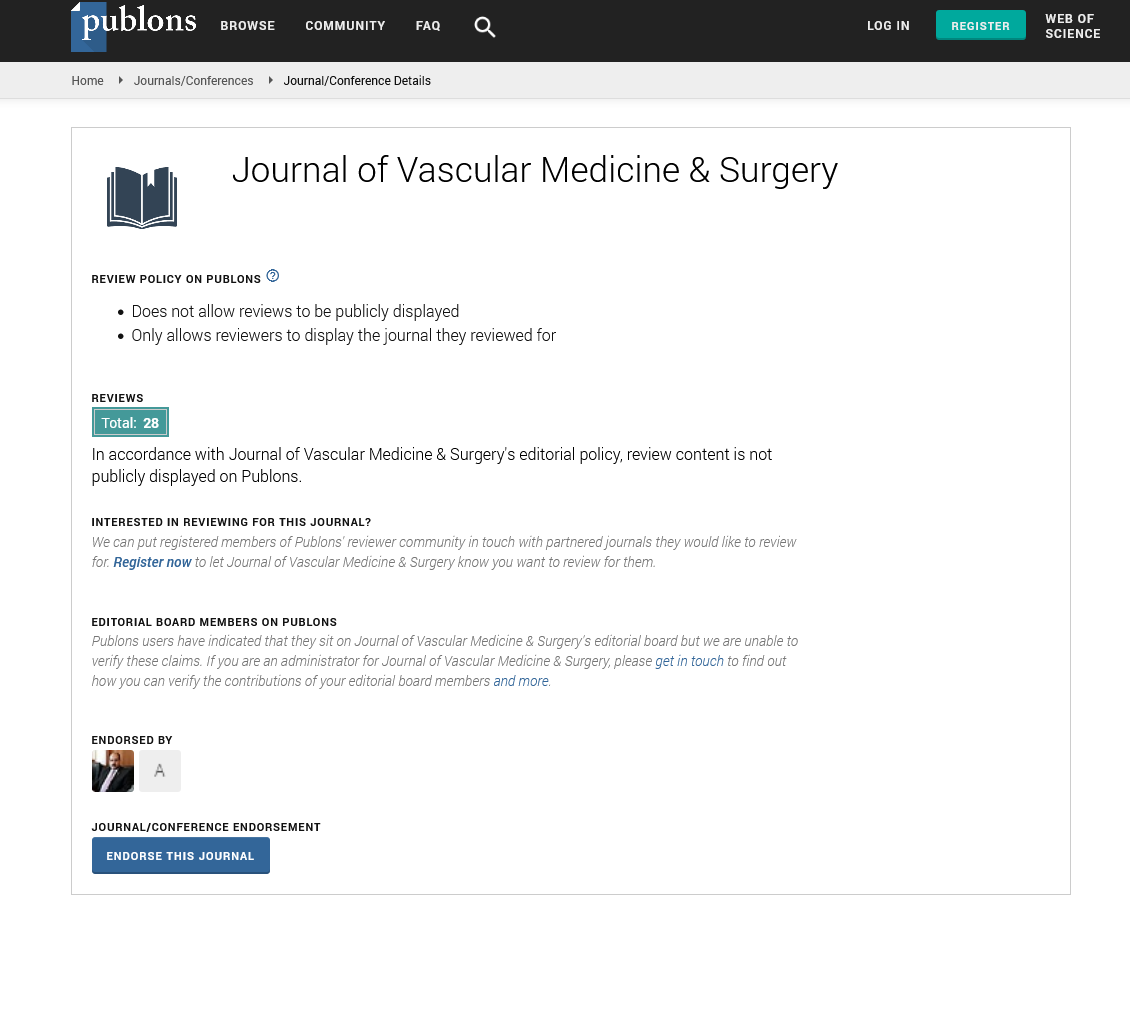Indexed In
- Open J Gate
- Academic Keys
- RefSeek
- Hamdard University
- EBSCO A-Z
- OCLC- WorldCat
- Publons
- Euro Pub
- Google Scholar
- SHERPA ROMEO
Useful Links
Share This Page
Journal Flyer

Open Access Journals
- Agri and Aquaculture
- Biochemistry
- Bioinformatics & Systems Biology
- Business & Management
- Chemistry
- Clinical Sciences
- Engineering
- Food & Nutrition
- General Science
- Genetics & Molecular Biology
- Immunology & Microbiology
- Medical Sciences
- Neuroscience & Psychology
- Nursing & Health Care
- Pharmaceutical Sciences
Perspective - (2024) Volume 0, Issue 0
Arterial Health: Structure, Function and Common Diseases of Arteries
Tianrun Jinbo*Received: 29-Jul-2024, Manuscript No. JVMS-24-26833; Editor assigned: 31-Jul-2024, Pre QC No. JVMS-24-26833 (PQ); Reviewed: 14-Aug-2024, QC No. JVMS-24-26833; Revised: 21-Aug-2024, Manuscript No. JVMS-24-26833 (R); Published: 30-Aug-2024, DOI: 10.35248/2329-6925.24.S23.552
Description
Arteries are fundamental elements of the human circulatory system, responsible for carrying oxygenated blood from the heart to various tissues and organs throughout the body. Their structure, function and health are essential for maintaining overall well-being.
Structure of arteries
Arteries are veins that transmit blood from the heart. They are characterized by their muscular walls, which are essential for maintaining the high pressure of blood flow directly from the heart. The artery wall consists of three stages.
Tunica intima: The innermost layer of the artery is composed of endothelial cells that provide a smooth wall for blood flow and reduce friction. This layer plays a significant role in maintaining vascular health by releasing substances that regulate blood pressure and blood clotting.
Tunica media: The middle layer of the artery is made up of smooth muscle cells and elastic fibers. It is the thickest layer and is responsible for the artery's ability to contract and relax, which helps to regulate blood pressure and flow.
Tunica externa (adventitia): The outermost layer consists of connective tissue, providing structural support and elasticity to the artery. It also contains nerves and small blood vessels, known as vasa vasorum, that supply the arterial wall.
Function of arteries
The main function of arteries is to circulate oxygenated blood from the heart to the body's tissues and organs. This process begins with the left ventricle of the heart pumping blood into the aorta, the largest artery in the body. From the aorta, blood is distributed to various branches of arteries, which progressively divide into smaller arterioles and eventually into capillaries, where the exchange of oxygen, nutrients and waste products occurs. An artery also plays an important role in maintaining blood pressure and regulating blood flow. The smooth muscle in the tunica media can constrict or dilate in response to signals from the nervous system and hormones, thus adjusting the diameter of the arteries and controlling the volume of blood that reaches different parts of the body.
Types of arteries
Arteries can be divided into different types based on their size and function.
Elastic arteries: These are the largest arteries, including the aorta and its major branches. They contain a high proportion of elastic fibers, allowing them to stretch in response to the pressure of the blood pumped by the heart. This elasticity helps to maintain a steady flow of blood during the cardiac cycle.
Muscular arteries: Muscular arteries also known as distributing arteries, these medium-sized arteries deliver blood to specific organs and regions of the body. They have a higher proportion of smooth muscle in their walls, allowing for greater regulation of blood flow through vasoconstriction and vasodilation.
Arterioles: The smallest branches of arteries, arterioles are the primary regulators of blood flow into capillary networks. Their walls are primarily composed of smooth muscle, which can impact blood circulation and pressure.
Importance of arteries
Arteries are essential for improving life by ensuring that oxygenated blood affects body tissues. They play an essential role in arteries transport oxygen and essential nutrients to cells, which are necessary for energy production, growth and repair. By facilitating blood flow to the kidneys, liver and other organs, arteries helps to remove carbon dioxide and other metabolic wastes from the body. It contributes to the regulation of blood pressure through the contraction and relaxation of their muscular walls, allowing the circulatory system to adapt to changing physiological demands.
Common arterial diseases
Arterial diseases can have serious implications for health, as they impair the ability of arteries to function properly. Some common arterial diseases include: Atherosclerosis is condition characterized by the buildup of plaque (composed of fat, cholesterol and other substances) on the inner walls of arteries.
This can lead to the narrowing and hardening of arteries, reducing blood flow and increasing the risk of heart attack, stroke and other cardiovascular conditions. Arteriosclerosis is a general term for the strengthening and tightening of arterial walls, frequently associated with aging. Arteriosclerosis reduces the elasticity of arteries.
Citation: Jinbo T (2024). Arterial Health: Structure, Function and Common Diseases of Arteries. J Vasc Surg. S23:552.
Copyright: © 2024 Jinbo T. This is an open access article distributed under the terms of the Creative Commons Attribution License, which permits unrestricted use, distribution, and reproduction in any medium, provided the original author and source are credited.

